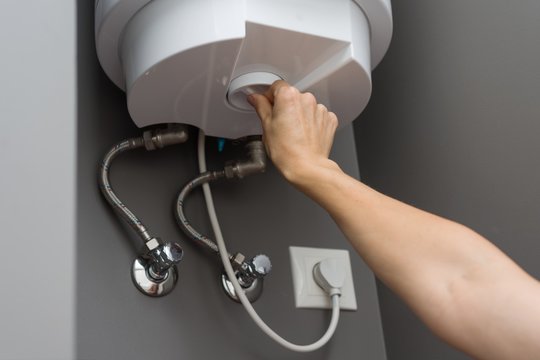We have found this great article pertaining to What Kind of Maintenance Do Water Heaters Need? down the page on the internet and figured it made perfect sense to relate it with you on this site.

Warm water is important for day-to-day comfort, whether it's for a revitalizing shower or washing recipes. To guarantee your hot water system runs successfully and lasts much longer, normal maintenance is crucial. This post provides practical pointers and understandings on how to maintain your home's warm water system to prevent interruptions and costly repair work.
Intro
Maintaining your home's warm water system might seem daunting, however with a couple of simple steps, you can ensure it runs efficiently for several years to come. This overview covers everything from understanding your warm water system to do it yourself maintenance ideas and knowing when to hire professional aid.
Relevance of Preserving Your Warm Water System
Regular maintenance not just extends the life-span of your hot water system however also guarantees it operates efficiently. Disregarding maintenance can bring about decreased effectiveness, greater power expenses, and also premature failing of the system.
Signs Your Warm Water System Needs Maintenance
Understanding when your warm water system needs interest can avoid major problems. Keep an eye out for indications such as irregular water temperature, odd noises from the heater, or rustic water.
Understanding Your Hot Water System
Prior to diving right into maintenance tasks, it's handy to understand the standard components of your warm water system. Typically, this consists of the hot water heater itself, pipes, anode poles, and temperature level controls.
Monthly Maintenance Tasks
Normal monthly checks can help catch minor concerns prior to they escalate.
Flushing the Hot Water Heater
Purging your water heater gets rid of sediment buildup, enhancing performance and lengthening its life.
Checking and Changing Anode Rods
Anode poles prevent rust inside the storage tank. Checking and changing them when worn is critical.
Checking and Readjusting Temperature Settings
Adjusting the temperature settings guarantees ideal performance and safety.
DIY Tips for Maintenance
You can perform several maintenance jobs yourself to keep your hot water system in leading problem.
Looking for Leakages
Consistently evaluate pipelines and links for leakages, as these can cause water damage and higher expenses.
Checking Stress Alleviation Valves
Testing the pressure safety valve guarantees it operates appropriately and prevents excessive pressure buildup.
Protecting Pipelines
Protecting warm water pipes decreases warmth loss and can save power.
When to Call an Expert
While do it yourself upkeep is useful, some problems call for expert expertise.
Facility Concerns Requiring Expert Help
Examples consist of significant leaks, electric troubles, or if your hot water heater is consistently underperforming.
Routine Expert Maintenance Conveniences
Expert upkeep can consist of comprehensive inspections, tune-ups, and making sure compliance with safety and security criteria.
Final thought
Regular upkeep of your home's hot water system is necessary for effectiveness, long life, and expense financial savings. By complying with these tips and understanding when to seek specialist assistance, you can ensure a trustworthy supply of hot water without unanticipated disruptions.
How to Maintain an Instant Hot Water Heater
Before tinkering with your hot water heater, make sure that it’s not powered on. You also have to turn off the main circuit breaker and shut off the main gas line to prevent accidents. Also turn off the water valves connected to your unit to prevent water from flowing into and out of the appliance. 2. When you’re done, you have to detach the purge valves’ caps. These look like the letter “T†and are situated on either side of the water valves. Doing so will release any pressure that has accumulated inside the valves while at the same time avoid hot water from shooting out and burning your skin. 3. When the purge valves’ caps are removed, you have to connect your hosing lines to the valves. Your unit should have come with three hoses but if it didn’t, you can purchase these things from any hardware or home repair shops. You can also get them from retail stores that sell water heating systems. Read the user’s manual and follow it to complete this task properly. When the hosing lines are connected, open the purge port’s valves. 4. You should never use harsh chemical cleaners or solutions when cleaning your unit. Make use of white vinegar instead. It should be undiluted and you’ll probably use about 2 gallons. 5. Now flush your water heater. This task should probably take about 40 minutes. We can’t give you specific directions for this because the procedure is carried out depending on the type, model and brand of your heater. With that being said, refer to the user’s manual. 6. When you’re done draining the unit, you have to turn off the purge port valves again. Remove the hosing lines that you earlier installed on each of the water valves. Put the valve caps (purge port) back in their respective places and be very careful so as not to damage the rubber discs that are found inside these caps. 7. Now that everything’s back in place, check your user’s manual again to find out how to reactivate your water heating system. 8. Once it is working, turn one of your hot water faucets on just to let air pass through the heater’s water supply pipes. Leave the tap on until water flows smoothly out of it. https://www.orrplumbing.com/blog/2014/september/how-to-maintain-an-instant-hot-water-heater/

Do you appreciate more info about How to Maintain a Hot Water Heater in a Few Simple Steps? Give a remark below. We'd be delighted to know your thoughts about this blog entry. We are looking forward that you come back again before long. Be sure to set aside a second to distribute this post if you liked it. We thank you for reading our article about What Kind of Maintenance Do Water Heaters Need?.
Estimate